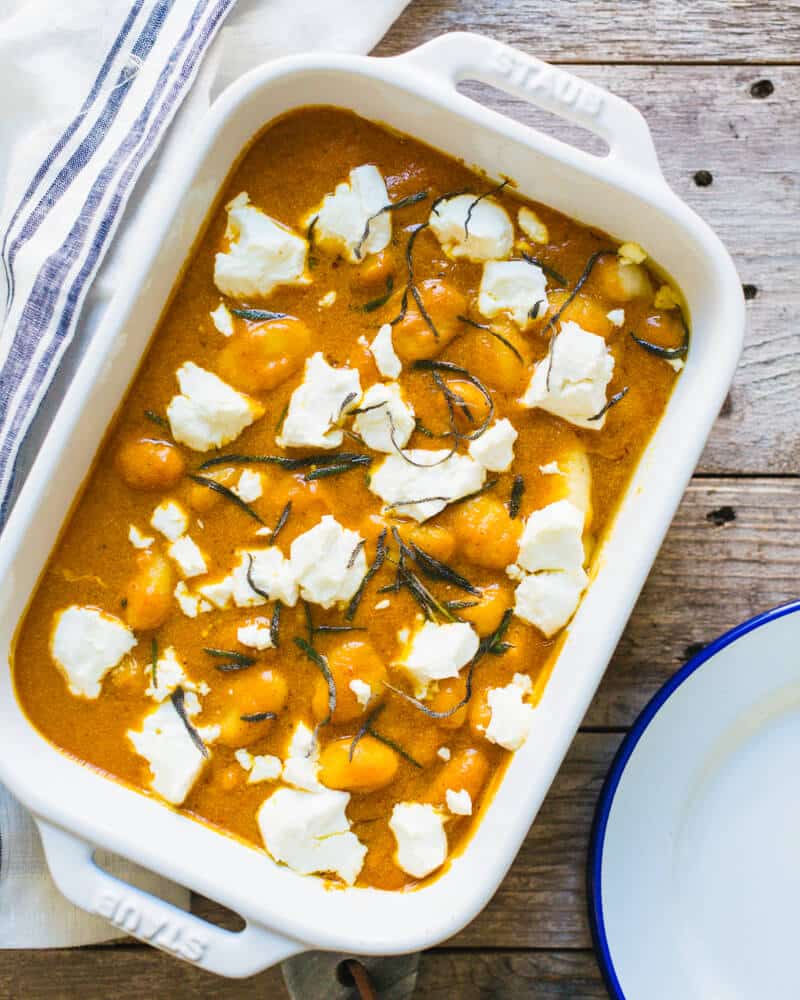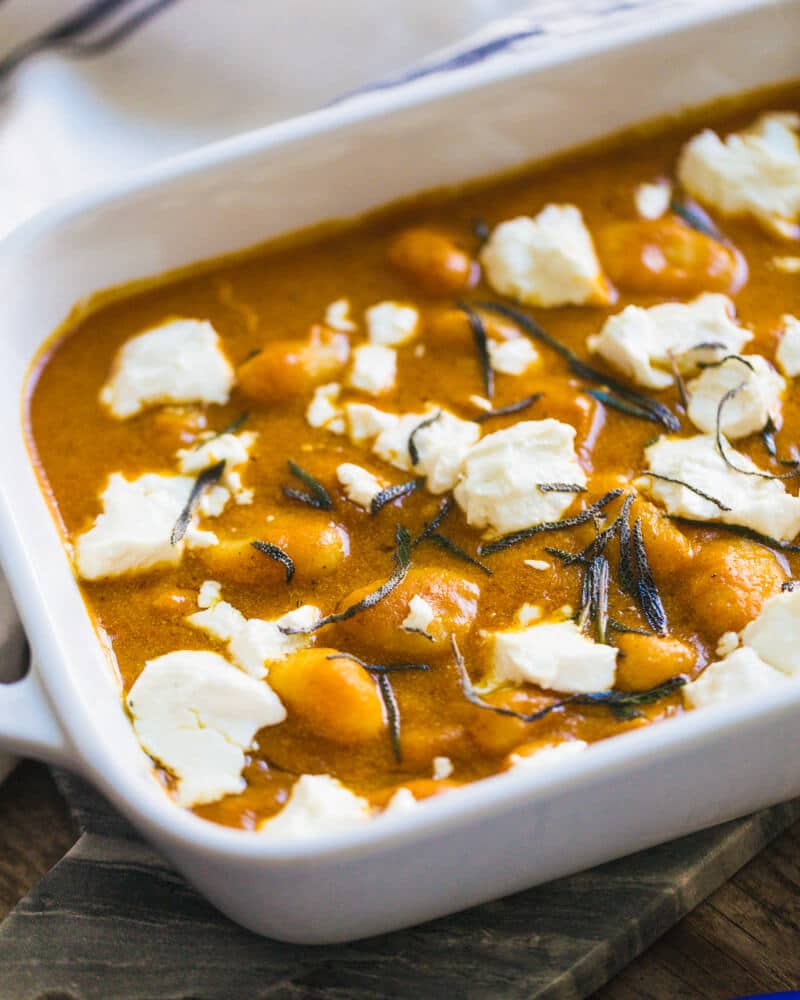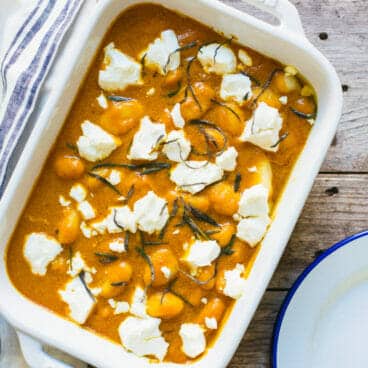Basic steps for this pumpkin gnocchi bake
Sometimes you stumble upon things better than you bargained. This pumpkin gnocchi bake turned out much better than we were hoping. It’s become a hands-down favorite, with pillow potato gnocchi drenched in savory pumpkin sauce and creamy pockets of goat cheese.
This recipe is so delicious, we find ourselves sneaking bites from the pan after we think we’re done. It’s become a family favorite and we make it on repeat every fall. It’s also easy to make, defying the notion that gnocchi can’t be simple. Here’s how it’s done!
It’s made with packaged gnocchi for ease of preparation: and these days, you can find some really great packaged gnocchi at the grocery. Of course you can make your own if you’d like, too! Here are the main steps to this recipe:
Make a quick pumpkin sauce: Mince garlic, then heat olive oil in a skillet. Sauté garlic for 1 to 2 minutes, then carefully add canned pumpkin puree, vegetable broth, chili powder, nutmeg, salt and pepper. Simmer about 10 to 15 minutes until the sauce becomes thick, then stir in a bit of Greek yogurt. Cook the gnocchi: Meanwhile, boil the gnocchi in a large pot of salted boiling water, about 2 to 3 minutes, until they float. Bake the gnocchi: Place the pumpkin sauce and gnocchi in a baking dish. Top with dollops of goat cheese and fresh thinly sliced sage. Bake 15 minutes until heated through and bubbly.
We hope you’ll find it as tasty and cozy as we do. It’s perfect as a fall dinner, or even a vegetarian Thanksgiving main dish.
Frequently asked questions
Another option could be ricotta cheese: but we’d add some salt and pepper to season it first, since it has a much more bland flavor than goat cheese. Or, you could try our Easy Creamy Gnocchi recipe instead, which uses Pecorino Romano cheese.
Has more vitamins and minerals than cow’s cheese. Goat’s milk is richer in essential nutrients than cow’s milk (like vitamin A & B, calcium, iron, magnesium, and potassium). Has slightly less calories than cow’s cheese. Goat cheese has just 75 calories per ounce—less than cow cheeses like mozzarella (85), Swiss (108), and cheddar (115). Is easier to digest. Goat cheese has less lactose than cow’s milk and a slightly different protein structure. That means even people who are lactose intolerant many times can digest goat cheese.
5 from 7 reviews



